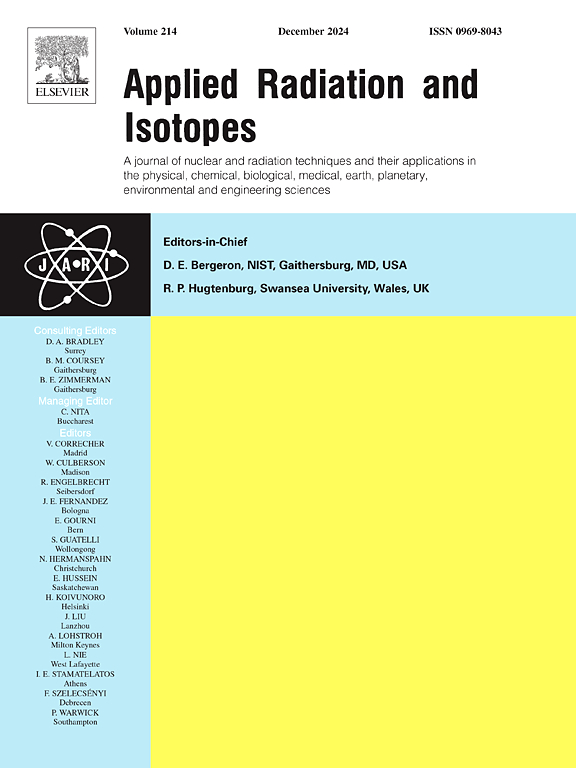溶胶-凝胶衍生ZnO和ZnO:Cu的结构、形态和光学性质及其作为伽马射线衰减剂的应用
IF 1.6
3区 工程技术
Q3 CHEMISTRY, INORGANIC & NUCLEAR
引用次数: 0
摘要
溶胶-凝胶法制备了原始的铜掺杂氧化锌纳米结构。通过标准分析方法考察了它们的共同性质。x射线衍射结果证实了氧化锌的六边形结构;尽管如此,铜的加入在一定程度上改变了氧化锌的结构。FESEM结果显示了纳米级准球形颗粒及其团聚。计算了辐射防护系数,包括平均自由程(MFP)、质量衰减系数(MAC)、线性衰减系数(LAC)、透射系数(TF)、第十值层(TVL)、半值层(HVL)和辐射防护效率(RPE)。综上所述,ZnO和ZnO- cu(10%和20%)作为γ射线的屏蔽材料是有价值的。为了进行更全面的审查,通过几何与跟踪(GEANT4)代码进行模拟调查,以比较保护参数。本文章由计算机程序翻译,如有差异,请以英文原文为准。
Structural, morphological, and optical properties of sol-gel derived ZnO and ZnO:Cu and its application as a gamma ray attenuator
Pristine and copper doped zinc oxide nanostructures have been afforded by a simple and easy to access sol-gel method. Their common properties were examined through the standard analyzing methods. X-ray diffraction results vouched the hexagonal structure of zinc oxide; even though, the insertion of copper changed the zinc oxide structure to some extent. FESEM achievements illustrated the nanosized quasi-spherical grains and the agglomeration of them. The protection factors against gamma rays, including mean free path (MFP), mass attenuation coefficients (MAC), linear attenuation coefficients (LAC), transmission Factor (TF), tenth value layer (TVL), half value layer (HVL) and radiation protection efficiency (RPE) were calculated. According to these factors, it can be concluded that the use of ZnO, and ZnO-Cu (10 % and 20 %) as a shielding for gamma ray can be valuable. For a more complete review, a simulation survey through GEometry ANd Tracking (GEANT4) code was applied to compare the protecting parameters.
求助全文
通过发布文献求助,成功后即可免费获取论文全文。
去求助
来源期刊

Applied Radiation and Isotopes
工程技术-核科学技术
CiteScore
3.00
自引率
12.50%
发文量
406
审稿时长
13.5 months
期刊介绍:
Applied Radiation and Isotopes provides a high quality medium for the publication of substantial, original and scientific and technological papers on the development and peaceful application of nuclear, radiation and radionuclide techniques in chemistry, physics, biochemistry, biology, medicine, security, engineering and in the earth, planetary and environmental sciences, all including dosimetry. Nuclear techniques are defined in the broadest sense and both experimental and theoretical papers are welcome. They include the development and use of α- and β-particles, X-rays and γ-rays, neutrons and other nuclear particles and radiations from all sources, including radionuclides, synchrotron sources, cyclotrons and reactors and from the natural environment.
The journal aims to publish papers with significance to an international audience, containing substantial novelty and scientific impact. The Editors reserve the rights to reject, with or without external review, papers that do not meet these criteria.
Papers dealing with radiation processing, i.e., where radiation is used to bring about a biological, chemical or physical change in a material, should be directed to our sister journal Radiation Physics and Chemistry.
 求助内容:
求助内容: 应助结果提醒方式:
应助结果提醒方式:


